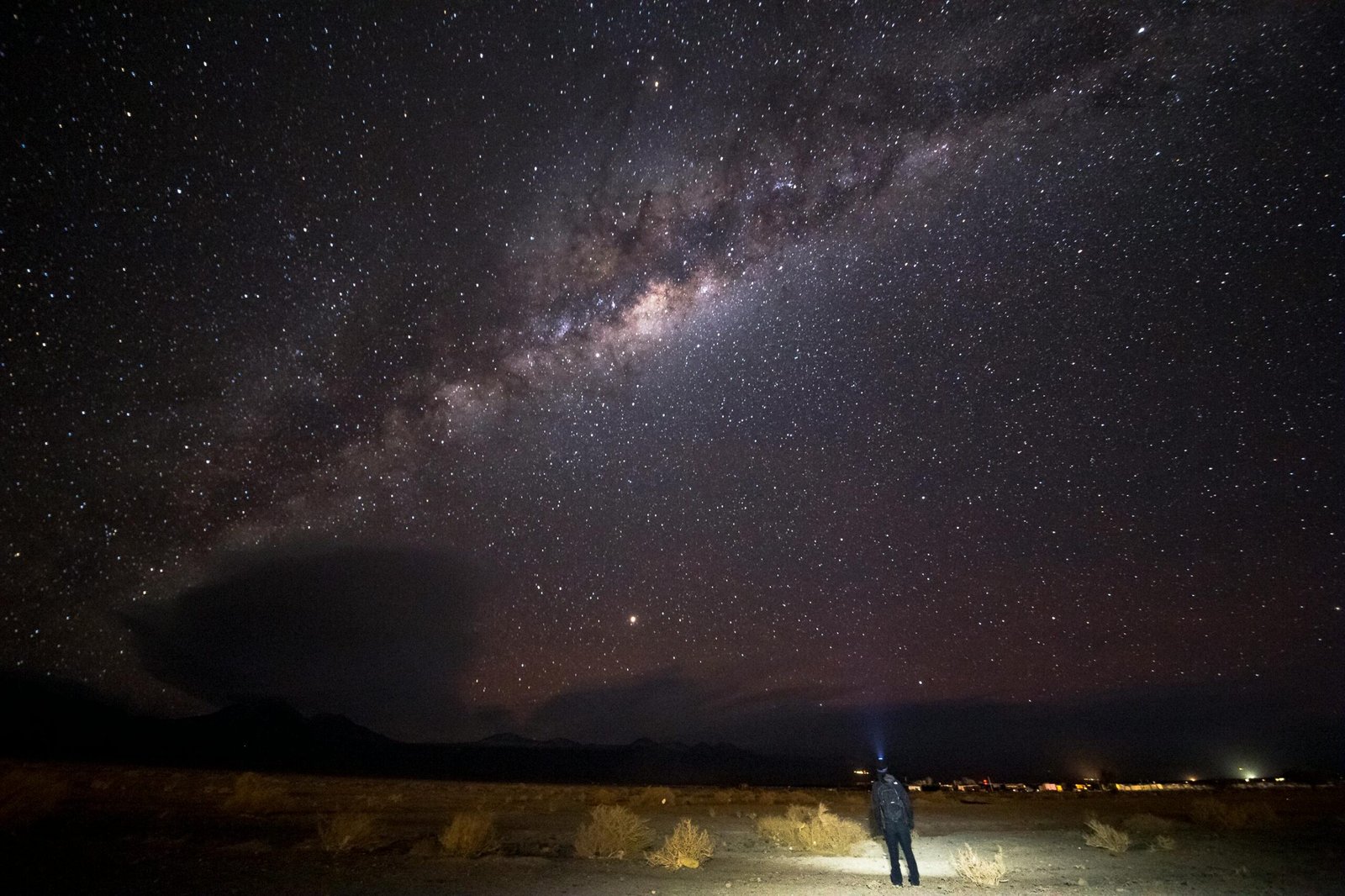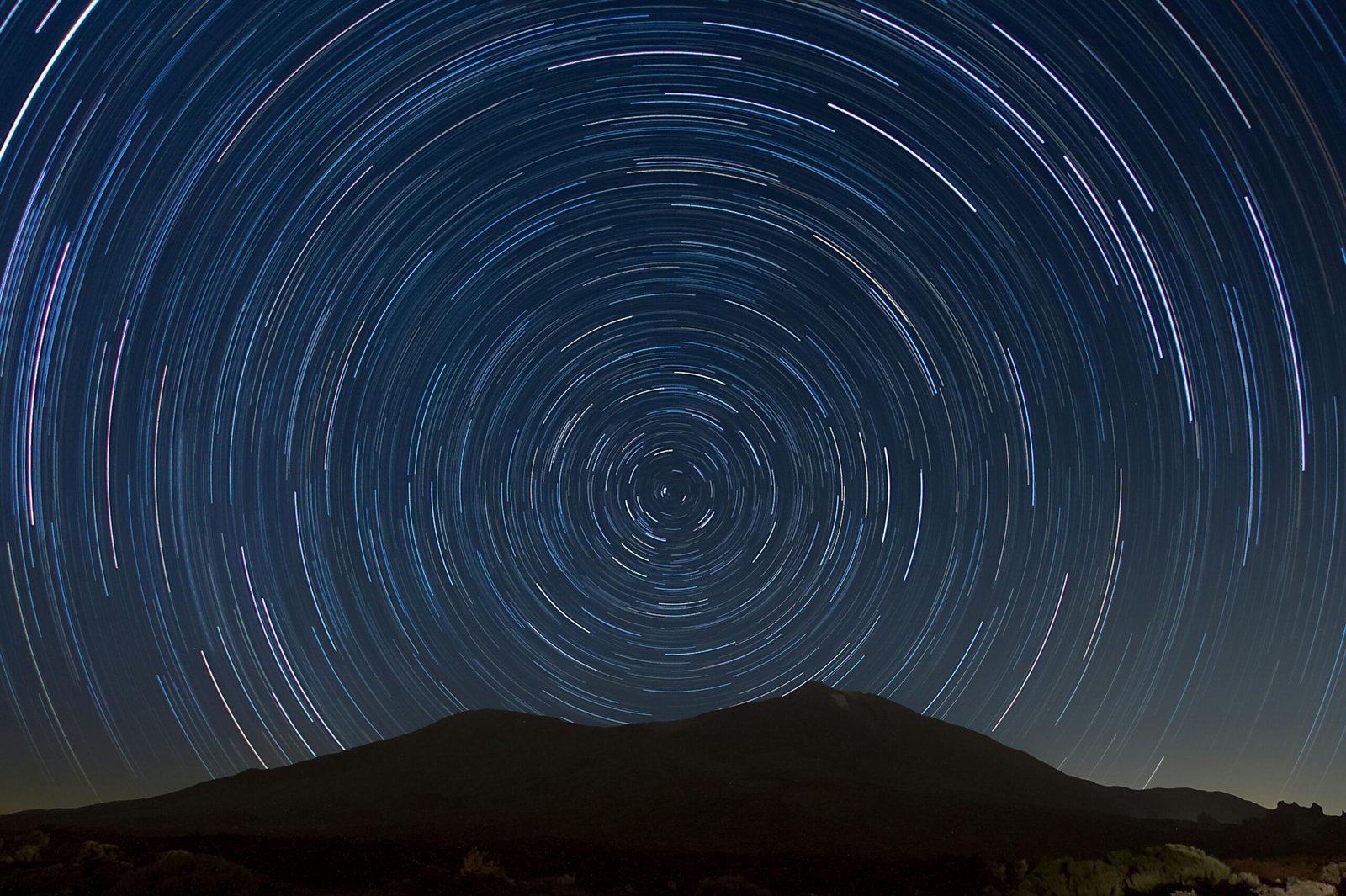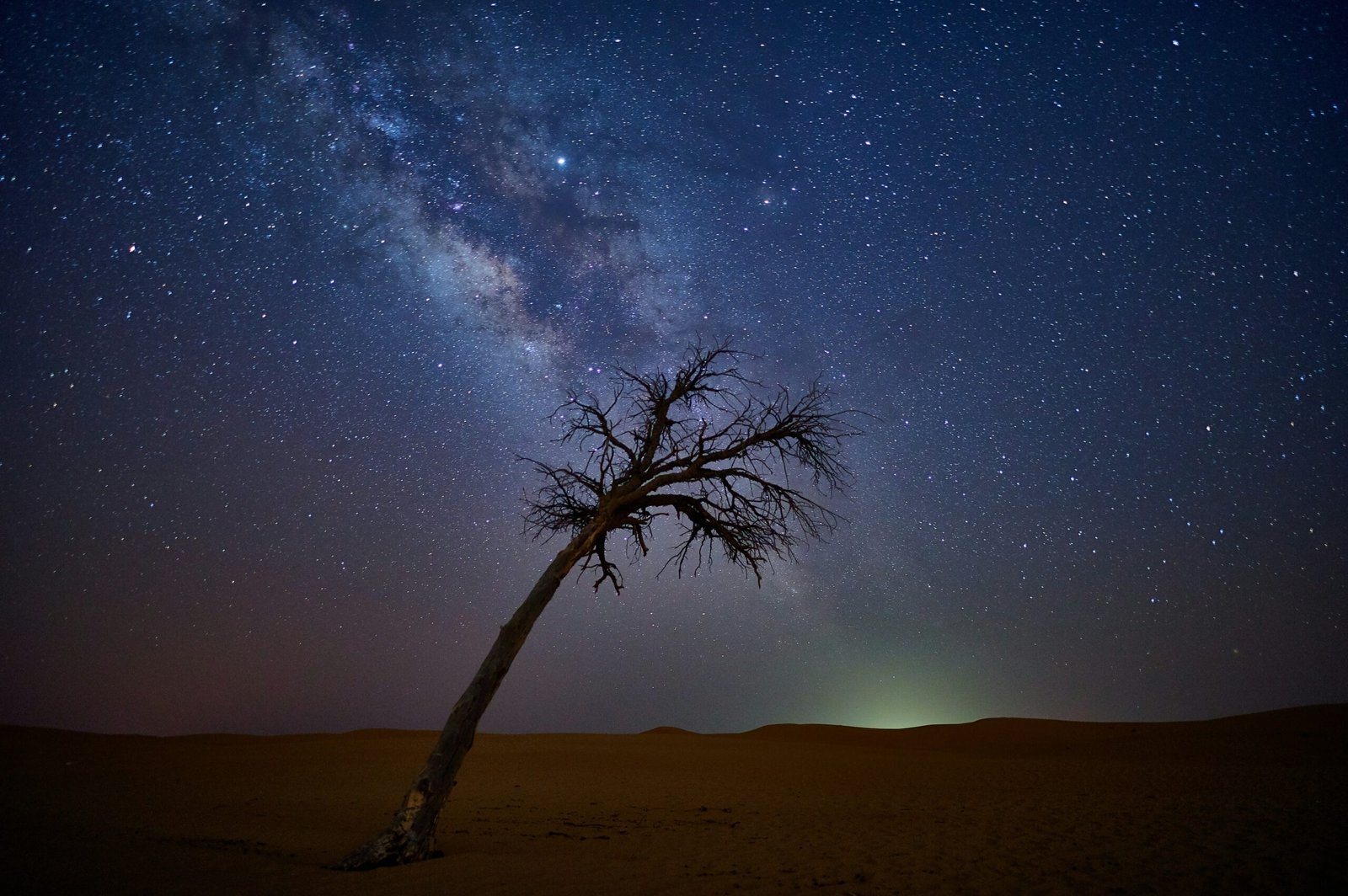For millennia, we have looked to the night sky in wonder. We’ve charted its courses, told stories about its constellations, and dreamt of what lies beyond. But in our modern, brightly-lit world, that profound connection has been lost in a haze of light pollution. The breathtaking spectacle of a truly dark sky—a celestial tapestry woven with billions of stars, the Milky Way arching overhead like a cosmic river—has become a rare and endangered experience.
However, a powerful travel trend is changing that. Welcome to the world of astrotourism. This isn’t just about spotting a few constellations; it’s about traveling with the specific intention of experiencing the night sky in its purest, most awe-inspiring form. It’s a journey away from the glare of our cities and into the heart of darkness, where the universe reveals its true majesty.
If you’re looking for a trip that is humbling and transformative, this guide to astrotourism is your call to adventure. It’s time to look up.

What is Astrotourism and Why is it a Top Travel Trend for 2025?
Astrotourism, often called dark-sky tourism, is travel undertaken for the purpose of stargazing and observing celestial events. This can range from visiting a certified Dark Sky Reserve to planning a trip around a meteor shower or a solar eclipse. The trend is booming for several key reasons: a search for authentic experiences, the need for a digital detox, and a growing awareness of light pollution.
Many of the world’s best dark-sky locations are found in remote, protected areas. These places, free from the city glow, are often incredible alternative travel destinations in their own right, offering unique cultural experiences by day and celestial wonders by night.
The World’s Best Destinations for Astrotourism
While a dark sky can be found in many remote places, some locations offer a truly world-class cosmic spectacle.
1. Atacama Desert, Chile: The Stargazer’s Paradise
Universally acclaimed as the best place on Earth for stargazing, the Atacama Desert combines high altitude, zero light pollution, and over 300 clear nights a year. The result is a sky so clear it feels three-dimensional.
- What to See: The Southern Cross, the Magellanic Clouds (two dwarf galaxies), and a level of detail in the Milky Way that will leave you speechless.
- How to Experience It: Stay in the quirky oasis town of San Pedro de Atacama. Numerous local operators offer tours with powerful telescopes. You can browse and book these unique experiences on GetYourGuide or Klook.
- Getting There: Fly into Calama (CJC) and take a shuttle. Start your flight search on a powerful metasearch engine like Aviasales to compare deals across hundreds of airlines.
2. The Canary Islands, Spain: Europe’s Window to the Universe
The volcanic peaks of the Canary Islands, particularly Tenerife and La Palma, rise above the cloud layer, offering exceptionally stable and clear skies. Consequently, the islands are home to several world-class professional observatories.
- What to See: A fantastic view of the northern and some southern constellations. Teide National Park in Tenerife is a certified Starlight Tourist Destination.
- How to Experience It: A rental car is essential for reaching Teide National Park’s remote viewpoints at night. Compare vehicles and book in advance on Rentalcars to ensure availability. For an unforgettable experience, book a Stargazing Tour at Mount Teide on Viator, often including a sunset toast and a guided telescope session.

3. Aoraki Mackenzie International Dark Sky Reserve, New Zealand
Located on the South Island, this is the largest Dark Sky Reserve in the world. The stunning turquoise of Lake Tekapo by day gives way to a breathtaking celestial dome by night.
- What to See: The Southern Cross, the Aurora Australis (Southern Lights) if you’re lucky, and a dazzling star field.
- How to Experience It: Visit the Mount John Observatory or take a guided tour from the village of Tekapo. A unique experience is stargazing from the soothing waters of the Tekapo Star Gazing hot pools. For accommodation, from lakeside hotels to cozy cabins, use a powerful price comparison tool like Hotellook.
4. NamibRand Nature Reserve, Namibia: Africa’s Dark Sky Jewel
Namibia’s desert landscapes are otherworldly by day and cosmically spectacular by night. The NamibRand Nature Reserve was one of the first Gold Tier Dark Sky Reserves in the world, signifying some of the darkest skies ever measured.
- What to See: An incredibly vivid Milky Way, the Scorpio and Sagittarius constellations, and an overwhelming number of stars.
- How to Experience It: Stay in one of the desert lodges within the reserve, many of which have their own observatories. Getting here requires a flight into Windhoek (WDH) and a 4×4 vehicle. Planning your stay is essential, and you can find unique lodges on Trip.com.

5. The US Southwest: A Grand Circle of Stars
The cluster of national parks in Utah and Arizona contains the highest concentration of certified Dark Sky Parks in the world. Arches, Canyonlands, and Grand Canyon National Parks offer iconic landscapes that become even more magical after dark.
- What to See: The Milky Way framed by famous rock formations like Delicate Arch.
- How to Experience It: This is the ultimate astrotourism road trip. Fly into Las Vegas (LAS) or Salt Lake City (SLC) and rent a car from a site like Economybookings.com. Stay in gateway towns like Moab, Utah, and book accommodation far in advance.
Gearing Up for the Cosmos: An Astrotourist’s Packing List
While the main attraction is free, having the right gear can elevate your experience from great to sublime.
- A Red-Light Headlamp: This is the single most important piece of gear. White light ruins your night vision, while red light preserves it, allowing you to see your surroundings without blinding yourself to the stars. Find many options on Amazon.
- Binoculars: A good pair of 7×50 or 10×50 binoculars are a stargazing superpower, revealing stunning detail in the Milky Way, star clusters, and the craters of the moon.
- A Stargazing App: Apps like SkyView or Star Walk 2 use your phone’s GPS to identify constellations, planets, and satellites in real-time, turning your phone into a planetarium.
- A Portable Tripod: Essential if you want to try astrophotography, even with your smartphone. Modern phones have excellent night modes that require the phone to be perfectly still.
- Warm Clothing: This cannot be overstated. Even hot deserts get incredibly cold at night. Pack thermal base layers, a fleece, an insulated jacket, a beanie, and gloves.
How to Plan Your First Astrotourism Trip
Planning a stargazing trip requires a slightly different approach than a standard vacation. Here’s a step-by-step guide.
Step 1: Choose Your Celestial Target
First, decide what you want to see. Check the astronomical calendar for:
- Meteor Showers: The Perseids (August) and Geminids (December) are the most spectacular.
- The New Moon: This is the most crucial step! Plan your trip for the week surrounding the new moon. A full moon acts like a giant spotlight, washing out all but the brightest stars.
- The Milky Way Core: The brightest part of the Milky Way is best viewed from March to October in the Northern Hemisphere.
Step 2: Find and Book Your Trip
Use the International Dark-Sky Association’s website to find certified locations. Once you have a destination, book your core components.
- Flights: Use Aviasales to find the cheapest dates that align with the new moon.
- Accommodation: Use Hotellook to compare prices and find remote guesthouses.
- Tours: Book your stargazing tours on Klook or Viator well in advance.
Step 3: Secure Your Digital Life
You will be in remote locations, and when you do find a connection, it needs to be secure.
- eSIM for Connectivity: An eSIM from Airalo or Saily ensures you have data for navigation.
- VPN for Security: Protect your data on unsecured guesthouse Wi-Fi with a reliable VPN. NordVPN is an excellent option for travelers.
Frequently Asked Questions (FAQ) about Astrotourism
1. Do I really need a telescope to enjoy astrotourism?
Absolutely not. The most breathtaking experience is often just taking in the sheer scale of the Milky Way with your own eyes. Binoculars are a fantastic and portable upgrade. Telescopes are a bonus, best enjoyed on a guided tour.
2. What’s the difference between a Dark Sky Park and a Dark Sky Reserve?
A Dark Sky Park is typically a single park protected for its natural darkness. A Dark Sky Reserve, however, is a much larger area that includes a core dark zone and a surrounding community that has adopted quality outdoor lighting ordinances.
3. Can I take photos of the stars with my smartphone?
Yes! Modern smartphones have incredible night mode capabilities. To get the best shots, you’ll need a small, portable tripod to keep the phone perfectly still for the long exposure.
4. What happens if my flight to a remote destination is canceled?
Flight disruptions are a real risk with multi-leg journeys. For this reason, a service like Airhelp can be a lifesaver. They handle the complex process of claiming compensation from airlines for delayed or canceled flights.
5. Is astrotourism a sustainable form of travel?
Indeed, it is one of the most sustainable forms of tourism. It encourages the protection of natural environments from light pollution, often brings economic benefits to remote communities, and fosters a deeper appreciation for our planet.
Conclusion: Your Cosmic Invitation
In a world that constantly demands our attention, astrotourism offers a rare chance to be truly present and humbled. It’s a journey that reconnects us to the cosmos, to our own sense of wonder, and to a spectacle that has inspired humanity since the dawn of time. A trip for the stars is more than a vacation; it’s a shift in perspective.
The universe is waiting to be explored. Find your flight to a dark-sky destination on Aviasales, book a remote cabin on Vrbo, and prepare for an adventure of cosmic proportions.




